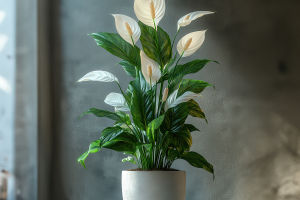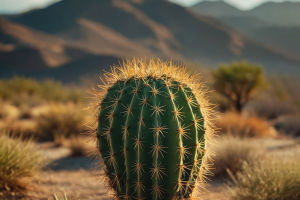Have you ever wondered what it would be like to see a plant that eats meat?
Sounds like something out of a science fiction story, right? Well, believe it or not, carnivorous plants are real! These fascinating wonders of nature have evolved unique ways to trap, digest, and absorb nutrients from unsuspecting prey.
In this article, we'll dive into the world of carnivorous plants, uncover their hunting techniques, and explore how they thrive in nutrient-poor environments. Let's uncover the secrets of nature's most hungry wonders!
1. What Makes a Plant Carnivorous?
At first glance, plants seem like peaceful organisms that rely solely on sunlight, water, and soil nutrients to survive. But some plants have developed a remarkable adaptation: they "eat" animals. Carnivorous plants have evolved specialized mechanisms to trap and digest small creatures such as insects, spiders, and even small amphibians. This is usually because their natural environments—like bogs or acidic soils—lack sufficient nutrients like nitrogen, which they need to grow.
In order to supplement their nutrient intake, these plants have evolved mechanisms that help them "capture" their food. Carnivorous plants are mainly found in humid, nutrient-poor environments, where they use their unique feeding strategies to survive.
2. Types of Carnivorous Plants
There are several types of carnivorous plants, each with its own specialized method of capturing prey. Here are a few of the most well-known:
1. Venus Flytrap (Dionaea muscipula):
The Venus Flytrap is perhaps the most famous of all carnivorous plants. Its leaves are modified into jaw-like structures that snap shut when triggered by tiny hairs inside the trap. When an unsuspecting insect lands on the trap, it triggers the hairs, causing the jaws to close rapidly and capture the prey. The plant then secretes digestive enzymes to break down the insect and absorb the nutrients.
2. Pitcher Plants (Sarracenia and Nepenthes):
Pitcher plants are named after their tall, pitcher-shaped leaves. These plants lure insects into their deep, slippery traps with nectar. Once inside, the prey cannot escape due to the smooth, waxy walls of the pitcher. They eventually fall into a pool of digestive fluid at the bottom of the pitcher, where they are broken down and absorbed.
3. Sundews (Drosera):
Sundews are covered in sticky, glandular hairs that secrete a glistening, dew-like substance. This "dew" lures insects to land on the plant. Once the prey touches the sticky surface, it becomes trapped. The sundew then curls its leaves around the insect, slowly digesting it over time.
3. How Carnivorous Plants Trap Their Prey
Carnivorous plants have evolved several different strategies to catch and digest their prey. Let's look at the primary methods they use:
1. Snap Traps:
This is the method used by Venus flytraps. When an insect triggers the plant's sensitive hairs, the trap snaps shut in a fraction of a second. This rapid movement is one of the fastest in the plant kingdom.
2. Pitfall Traps:
Pitcher plants use this method. Their modified leaves create deep, slippery "pits" filled with digestive enzymes. Insects are lured by nectar and fall into the trap, where they are digested slowly over time.
3. Sticky Traps:
Sundews and other plants like butterworts use sticky glands to trap their prey. These plants produce sticky droplets that attract insects. When the insect lands, it becomes stuck and the plant's leaves curl around it, securing the prey.
4. Bladder Traps:
Found in plants like the bladderwort, these specialized traps create vacuum-like sacs. When small prey swim near the trap, it creates a vacuum, absorbing in the prey. The bladder then digests the trapped creatures.
4. Why Do Carnivorous Plants Eat Meat?
The reason carnivorous plants "eat" meat is to supplement their nutrient intake, particularly nitrogen. Most plants obtain nitrogen from the soil, but in nutrient-poor environments, like bogs or acidic swamps, nitrogen is scarce. To compensate for this deficiency, carnivorous plants have evolved to capture and digest animal prey, which provides them with the essential nitrogen and other nutrients they need to thrive.
These plants are not "meat-eaters" in the same way that animals are. They don't hunt for food out of necessity for protein but instead to ensure they get the nutrients they need for growth in challenging environments.
5. The Role of Carnivorous Plants in Ecosystems
Carnivorous plants play an important role in their ecosystems. By consuming insects, they help regulate insect populations, preventing overpopulation of certain species. This, in turn, helps maintain a balanced ecosystem, ensuring that plants and animals co-exist harmoniously.
Additionally, carnivorous plants contribute to the biodiversity of their environments. Many species of insects, including ants, flies, and beetles, rely on carnivorous plants for sustenance, while other creatures depend on these plants as a food source in their own right.
6. How to Care for Carnivorous Plants at Home
Are you fascinated by these meat-eating wonders and want to have one in your home? Taking care of carnivorous plants is not as difficult as it may sound! Here are a few tips:
• Watering: Carnivorous plants prefer distilled or rainwater. Tap water often contains minerals that can harm them.
• Sunlight: These plants thrive in bright, indirect light. Some species, like the Venus flytrap, even enjoy a few hours of direct sunlight each day.
• Feeding: If you're growing your carnivorous plant indoors, you may need to feed it small insects, like ants or fruit flies. However, be careful not to overfeed them—too much food can harm the plant.
• Humidity: Most carnivorous plants prefer high humidity. Keeping them in a humid environment, like a terrarium, can help them thrive.
Conclusion: Nature's Hungry Wonders
Carnivorous plants are one of nature's most fascinating creations. With their unique adaptations and incredible hunting techniques, these plants show us just how diverse and creative nature can be. While they may seem strange and even a little scary, they play a vital role in their ecosystems and continue to capture the imagination of plant lovers around the world.
Have you ever grown a carnivorous plant, or are you considering adding one to your collection? Share your thoughts and experiences with us in the comments below! We'd love to hear from you and learn how these fascinating plants have impacted your gardening journey.


